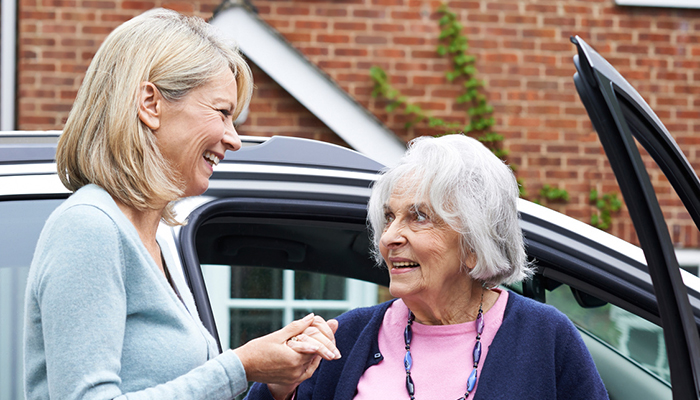
If a new car is in your future—even just a new-to-you car—look for features that support your role as a family caregiver.
For instance, extra room for carrying things can make your job a lot easier!
More important, look for features that will protect your back as you help your loved one in and out of the car. Back injuries are painful and costly. They are the number one physical problem among family caregivers.
Consider these features before you buy a car:
- Height of the car. Avoid low-slung cars with bucket seats, or elevated trucks and SUVs. Choose instead a mid-height sedan, minivan, or crossover vehicle.
- Practice the transfer. Go through the motions your loved one would use to get into and out of the car. Is there something to hang onto in both directions (handle over the door, handle of the door, seat back, etc).
- Electric seats are a plus. You may have to adjust seat position each time your relative gets in the car. Save your back! Check out the maneuverability of the backseat, too. If your loved one has moderate dementia, it is best for him or her to ride in the rear.
- Keyless doors and locks. Remote, pushbutton opening leaves your hands free to help your relative. It is also useful if you are carrying equipment or supplies.
- Room for a walker or wheelchair. If the person you care for already has one of these mobility aids, take it with you when you shop for a car. Can you fit the walker in behind the front seat? Or will it have to take up space in the trunk? Can you easily and safely lift a wheelchair in and out of the cargo space?
- Electric windows and locks. People with dementia have been known to open the door while in a moving car. Look for the “child safety” feature that allows the driver to control the windows and doors.
- Heated and cooled seats. Older adults often have trouble regulating their temperature. If possible, buy a car that provides heating or cooling individually for each seat.

